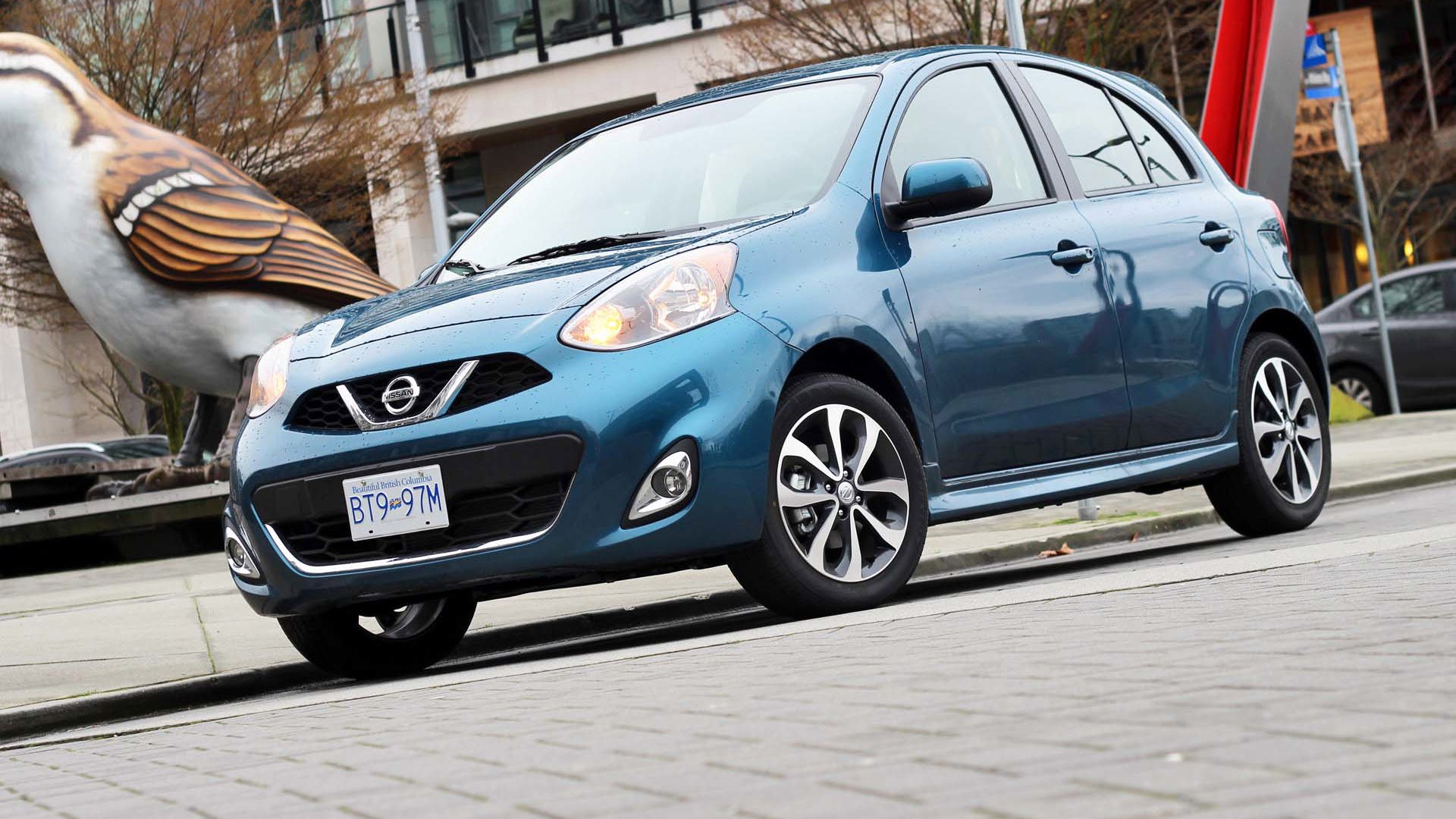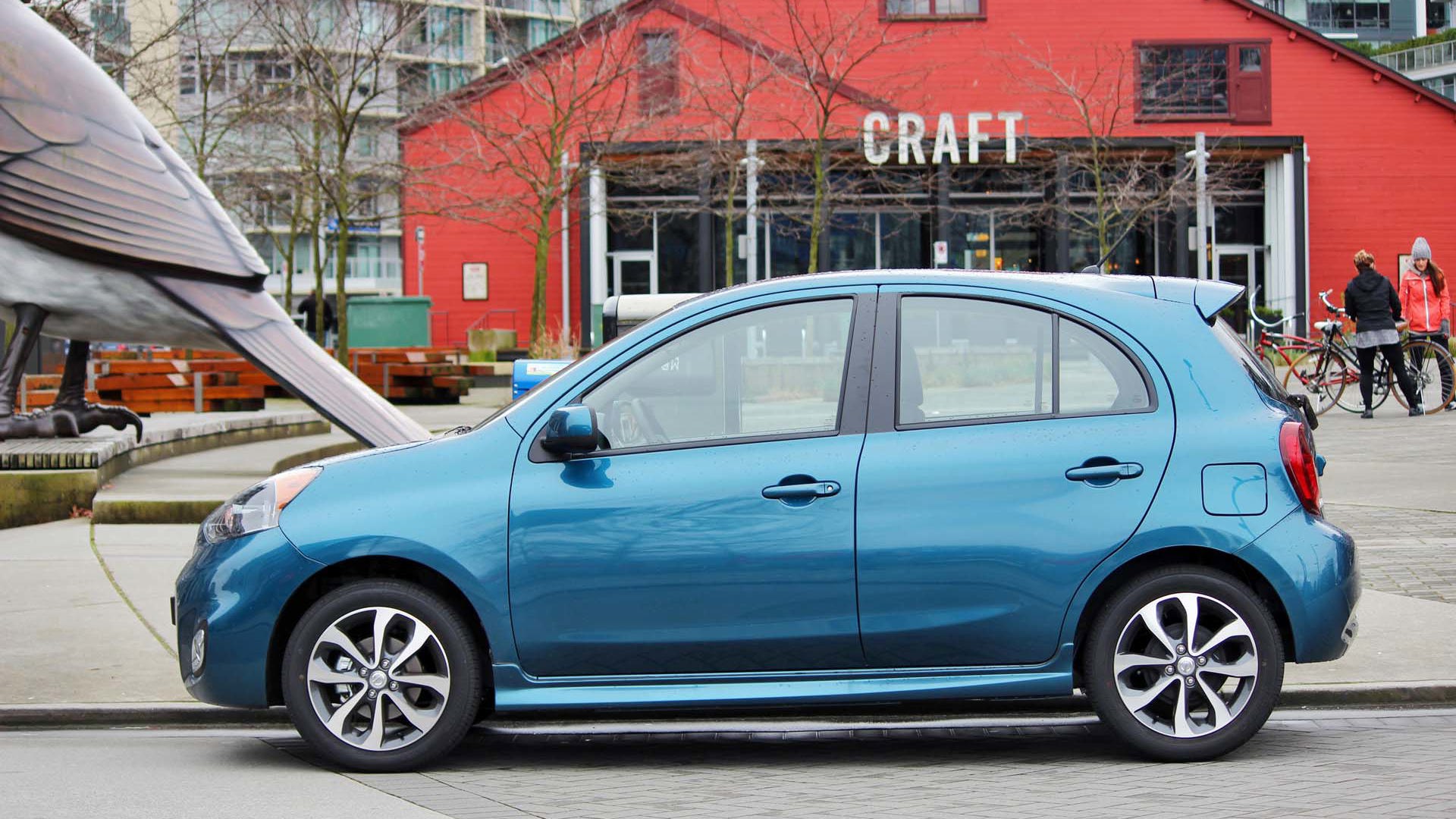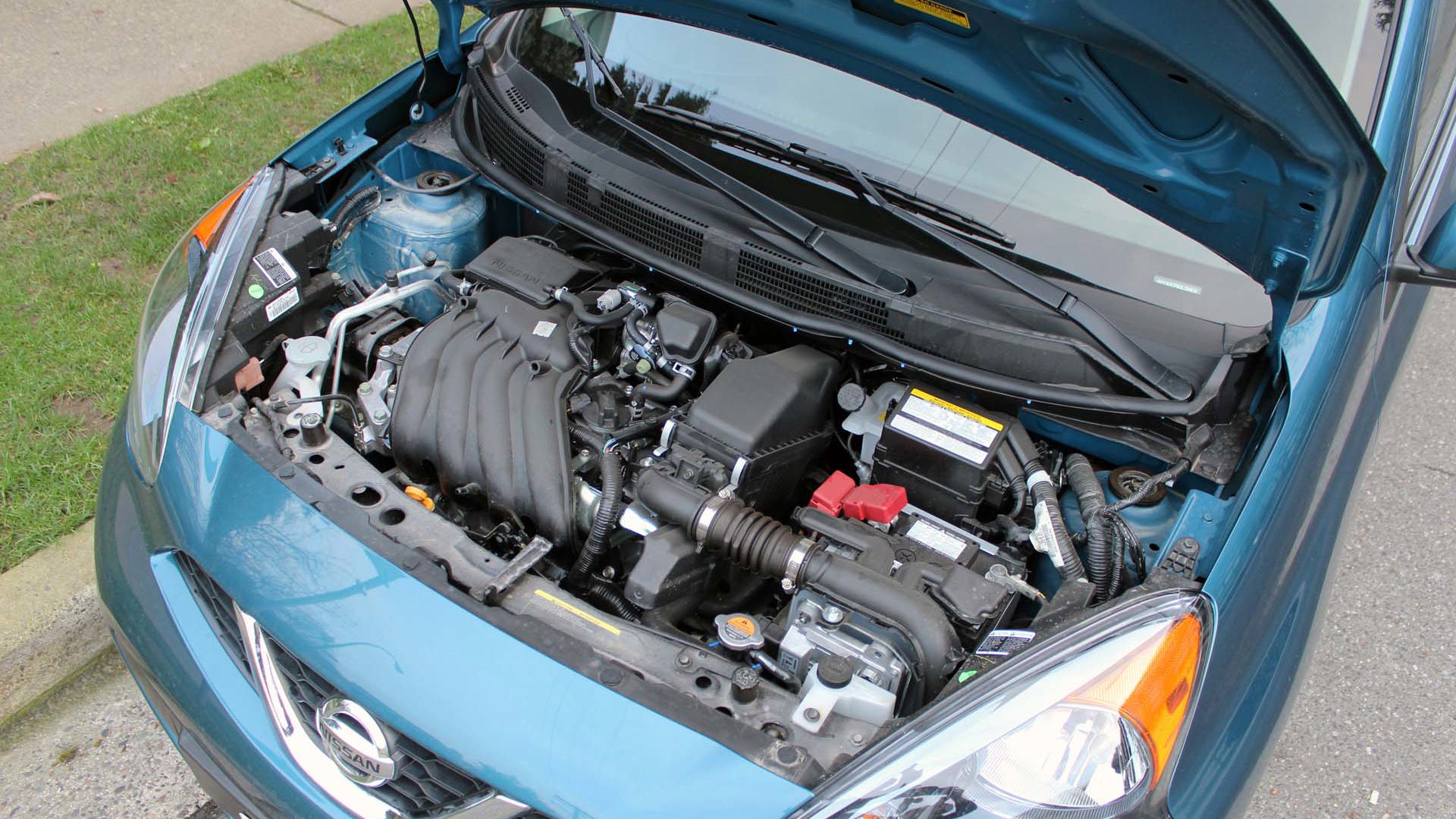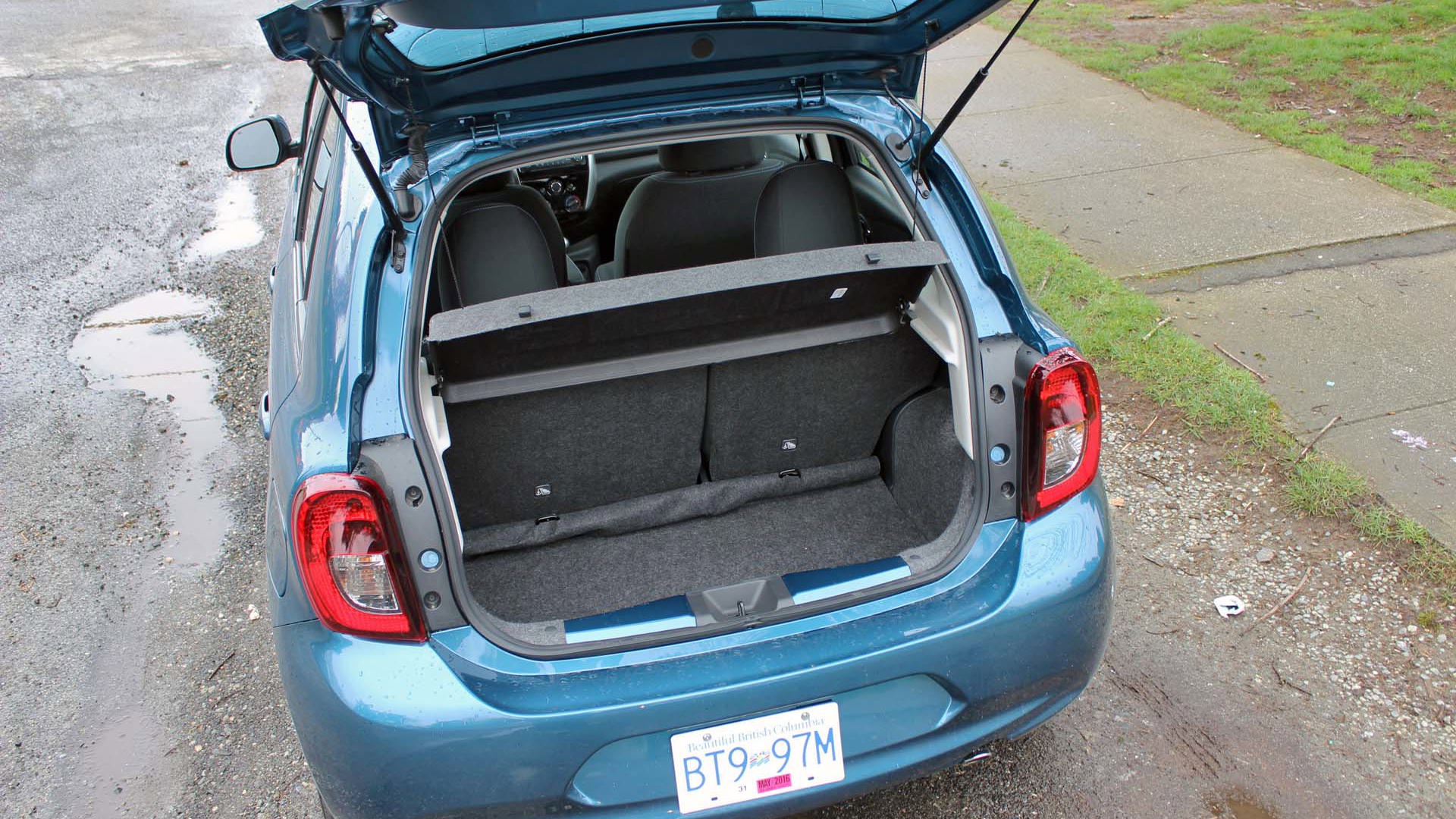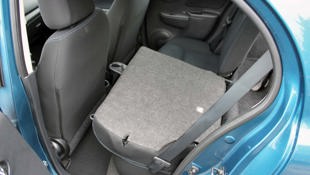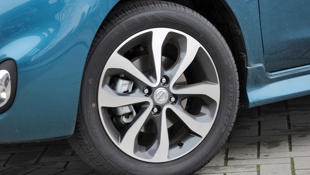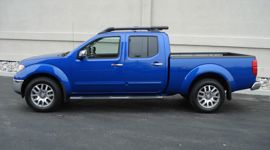 AutoTrader SCORE
AutoTrader SCORE
-
COMFORT8/10
-
PERFORMANCE6/10
-
FUEL ECONOMY8/10
-
INTERIOR7/10
-
EXTERIOR STYLING8/10
What’s there to say, really, about the Nissan Micra? It’s a subcompact hatch, has the lowest cost of entry in the country and makes just a little more power than does your average ride-a-mower.
Backseat comfort backs up the numbers; there is no way such a small car should provide this kind of comfort back there, but it does, full stop.
Look a little deeper though. You’ll find there’s a one-make race series centred around these little buggers, as well as an SR version – as you can see here – for those who want a little more zing, a little more zang to go with their bottom-dollar. In Japan there’s even a sport-tuned Nismo S version (it’s called “March” there) that makes 114 hp and 115 lb-ft of torque. We don’t see that here, but I say it lends another layer of interest to the car and helps show how Nissan managed to sell over 10,000 of these in Canada last year. Pretty impressive for a car that isn’t even sold in the US.
Above all for the sake of this column, of course, is that this here’s a car that looks ready to handle any Big Guy in your life.
The Knee Test
Since you almost step down into the little Nissan, there’s much less chance of smacking your knee on either the centre stack or gear lever. This “step-down” architecture also helps shorter folk, as they don’t have to clamber up into a high seat.
It’s a surprisingly high seating position, too, which can be lowered on the SR and SV trims as they come with a 6-way driver’s seat. Thing is, it’s not so high that you’re scrubbing the headliner; as the profile shows, the Micra’s roof is quite tall, providing 1,033 mm of front headroom, and 976 mm of rear headroom. That’s more of each than you’ll find in the Honda Fit, Toyota Yaris five-door hatch or Hyundai Accent hatch. Both the Hyundai and the Fit beat the Micra on the front legroom count, although we’re talking millimetres here and rear legroom is near-as-makes-no-difference on all four. The three other cars do offer more cargo capacity than the Micra, though, and none of them can compare with the Fit’s ingenious Magic Seat system.
While the seating position isn’t bad (provided you’re not expecting something low-slung and high-bolstered – these seat cushions are pretty flat), the fact that you can’t adjust the reach of the steering wheel is a bit of a disappointment, as is the slightly small bottom cushion. If you’re like me, you need to slide the seat pretty far back on its rails in order to be comfortable, which means that unless you have the reach to match, you may find yourself with sore-ish shoulders. I’ve seen worse, but I wouldn’t mind the option.
Know who races in a Micra? Elvis Stojko, that's who.
Backseat comfort backs up the numbers; there is no way such a small car should provide this kind of comfort back there, but it does, full stop. I suppose it’s a bummer that there’s no rear armrest, but that, of course, would cost more and if you’re going to have the lowest cost of entry on the market, well, you’re going to have to sacrifice a few things. Plus, the rear seats will likely spend more time folded down than in-use, and any armrest would cut into hip room back there, so I just don’t really see the need.
The Hockey Bag Test
Yes, cargo may be down on the competition, but that didn’t stop us from fitting a hockey bag back there with the seats down. It wasn’t just any bag, either; it was a bag full of adult-sized goalie gear, including a pair of leg pads. Getting it in and out of the Micra was much easier than many larger sedans I’ve sampled, that’s for sure. Even some larger crossovers are tougher, simply because of the higher liftover height. Have you ever felt a frickin’ fully-loaded goalie bag? It’s like 50 pounds or more. Yes, it would be nice if a completely flat load floor was left behind once folded, or if you could modify the load floor like you can in the Micra’s Versa Note stablemate, but at least we have split-folding rear seats as standard on all trims.
The Rest
Even at its most basic of trims, the Micra is not a bad-looking car; yes, the tall roof required for all that headroom makes it slightly awkward in profile, but that’s really more of a nitpick than anything. Plus, switch to the SR trim, and a host of finer details take your focus off the roof height.
While the SR trim doesn’t actually sit any lower than others, the larger two-tone wheels (base models get 15” wheel covers; these are 16” alloys) do give the appearance that it’s sitting a little lower to the ground. If that’s not enough, all sorts of customization can be done at the dealer level, from contrasting rocker panels, to different wing mirror caps and fog light surrounds. While the catalogue isn’t quite as robust as something you’d see from say, Mini, it’s nice to have the choice.
Me? Well, I’m a big fan of my tester’s Caspian Sea metallic paint, though it is one of two available colours that you have to shell out a little extra dough for. Yes, on the surface, the $135 required doesn’t seem like much, but when we’re talking about a car that relies on its excellent pricing as a big selling point, you can see how that supplemental charge will get some backs up.
While the interior is spacious, I wouldn’t exactly call it an exciting place to be. Grey seat fabric and plastic (your only choice) permeate throughout, and if it weren’t for my car’s infotainment system, this baby has rent-a-special written all over it. While A/C is standard on all but the base trim, there’s no option for auto climate control, so while I prefer knobs and dials to an all-touch interface, the plasticky items found here aren’t much to write home about. Remember: this is a car that starts at less than $10 grand.
I do like Nissan’s infotainment interface, though. Of course, you have to upgrade to the SR trim seen here (it starts at $15,988) to get it, but it’s easy to use, well laid out and still makes use of knobs and buttons instead of an all-touch interface, which I love. The 4.3” screen is smaller than some of the competition, though, and navi isn’t even an option but you do get a back-up camera. It’s just too bad the camera itself protrudes like an unsightly pimple from the rear hatch.
Let’s Hit the Road
As cool as the JDM Nismo S model must be, we don’t get it here, leaving us with a single engine choice: a 1.6L 4-banger, good for 109 hp and 107 lb-ft of torque. It’s fed to the front wheels through either a five-speed manual or four-speed automatic transmission, the latter costing an additional $1,000 no matter which trim you choose.
Do I lament the lack of the brand’s continuously variable automatic, found on pretty much every other vehicle in the stable? That’s a tough question, as no CVT will ever really be able to match a proper automatic (or, indeed, a proper manual) in terms of driving fun. Nissan’s XTronic CVT is smooth, however, and often provides better fuel economy, always important for a city vehicle like this. I’d probably keep the traditional 4-speed, though, as it’s more responsive when it comes to highway cruising with regard to kicking-down for passes and such. Plus, it’s what helps keep the costs down. Speaking of costs: you could just save yourself the $1,000 and opt for the manual transmission, which really lets you put your Italian Job down when navigating rush hour traffic and the like.
It’s important that the transmission works well within the powertrain; when you’re down on power, issues raised by a laggy transmission become all that more apparent. You can feel it, too; that ride-a-mower comment from the intro? I have to credit a friend of mine for coming up with it, as that’s exactly how he labelled the feeling when I had the pedal to the medal. It’s buzzy, it revs high (peak hp comes at 6,000 rpm, peak torque at 4,000) and it’s not the quietest interior.
All that’s really only an issue on the highway, though, as around town, it doesn’t get much better this side of a Smart ForTwo. The steering rack is agile yet direct, and since the car’s so light (it weighs in at just over 1,000 kilos), sawing the wheel as you weave through traffic and down alleyways is effortless. That tall greenhouse, meanwhile, means it’s that much easier to see where you’re going, and whether or not you’ll be able to safely thread the needle between that bus and the curb.
It’s helped by the fact that the wheels have been moved far to the corners of the chassis, meaning very little overhang and a minuscule turning radius. That’s what helps provide the interior space, too; less wheel well intrusion means the space can be better used for other things. Like people.
It’s an incredibly fun steer, this car, which is why it makes such a compelling case as a club racer – the steering rack in the car you see here is found in the Cup car, too. Same goes for the engine specs, while the removal of most of the interior bits, the fitting of a roll cage, better brakes, new exhaust, five-point harness and Nismo-tuned suspension are really all that separate the racer from the base Micra. Pretty neat.
Not so neat is that in addition to the buzzy powertrain, the steering it a titch nervous at high speeds. It’s technically of the speed-sensitive variety, but all that agility ’round town manifests itself in the effort required to keep things on the straight and narrow past the 75 km/h mark. Its tallness means that heavier crosswinds can upset it, too, and the skinny 185-section tires mean that while the chassis is responsive, you don’t want to push too too hard through faster bends.
What I do appreciate both in town and on the open road, however, is how the Micra rides. With a short wheelbase and tall roof like that, the little Nissan should be bouncing to and fro, but it remains pretty planted, with only the biggest bumps causing much worry. Thank front and rear sway bars for the performance, while the torsion beam rear end does its part to keep the car planted. You can probably thank the fact that the Micra rides on a shrunken platform employed for the larger Nissan Versa Note for many of the ride characteristics.
So if you’re of taller ilk…
Well, aside from that lack of steering wheel reach and small cushion, there’s very little to complain about when it comes to fitting into the Micra’s cockpit, whether you’re riding in the front or the back. Meanwhile, if the Big Guy in your life fancies a good steer every so often, this is probably the ticket.
While the interior environs are of little concern, the Micra’s on-highway attitude leaves something to be desired. If there’s a lot of highway commuting involved, well, it will take some getting used to. Once you do, though, you’ll be treated to one of the more compelling subcompact packages on the market today.
NRCan Fuel Consumption: 8.8/6.6 L/100 km City/Highway
Observed Fuel Consumption: 8.3 L/100 km
| Warranty: 3 years/60,000 km; 5 years/100,000 km powertrain; 5 years/unlimited distance corrosion perforation; 3 years/60,000 km roadside assistance Competitors: |
| Model Tested | 2016 Nissan Micra |
|---|---|
| Base Price | $15,988 |
| A/C Tax | |
| Destination Fee | $1,600 |
| Price as Tested | $18,723 |
|
Optional Equipment
$1,135 -- 4-speed automatic transmission ($1,000), Caspian Sea metallic paint ($135)
|
|

